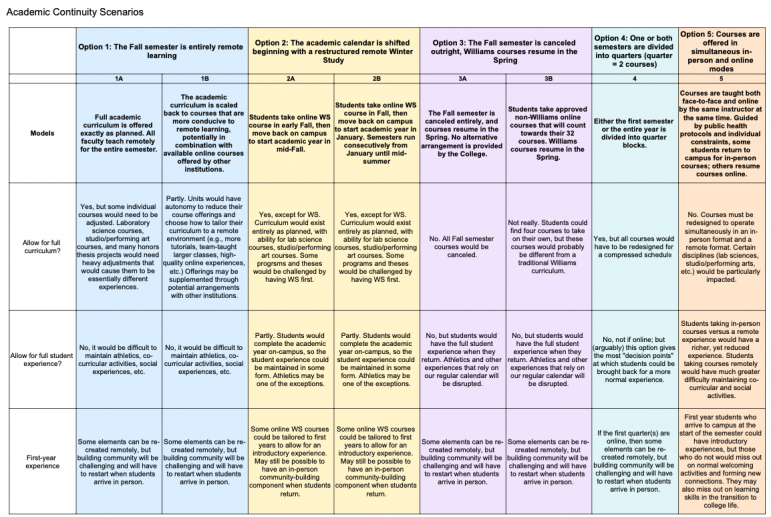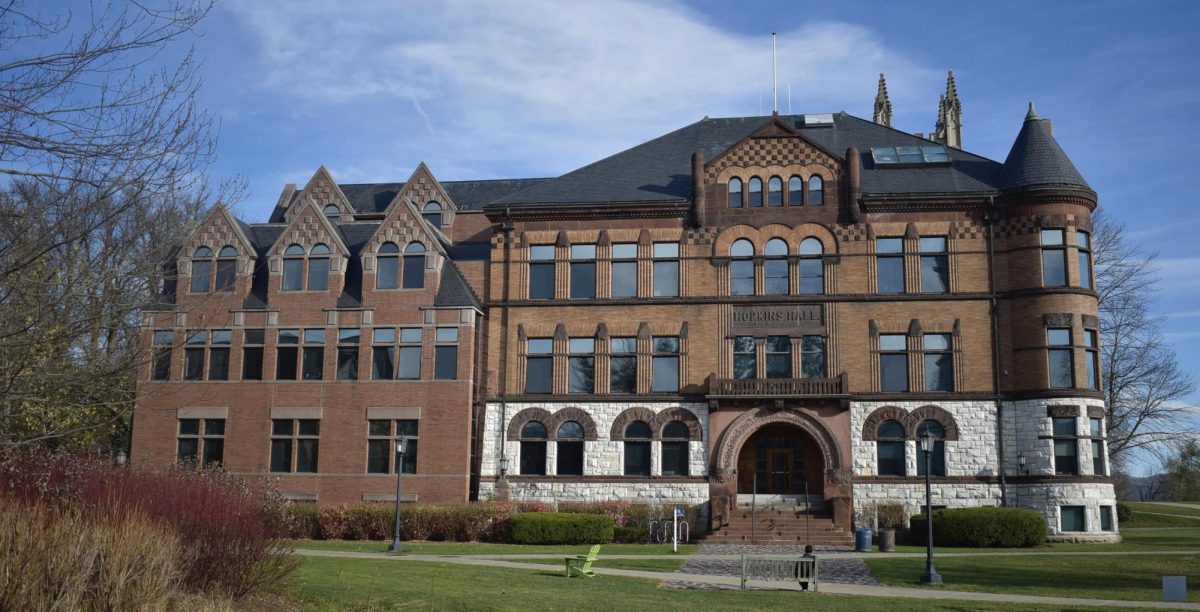
The ad hoc academic continuity planning group held a faculty meeting last week, in which professors discussed a seven-page memo released by the group detailing different scenarios for the fall semester in light of the COVID-19 pandemic. The memo describes five different scenarios for next semester, some of which have multiple sub-proposals, in the event that a regular return to campus is not possible. Meanwhile, another working group is planning for the fall if a return to campus is possible.
If you don’t want to read all seven pages, including the four-page, color-coded chart, here’s the breakdown:
What are the different scenarios presented?
Option One would have the fall semester run completely remotely, with two different versions: the College’s full academic curriculum as planned, or a “scaled back” curriculum that only consists of the courses most conducive to an online format. Students would possibly be able to take online classes at other institutions for credit as well.
Option Two considers reorganizing the academic calendar to start with Winter Study with the hope of an eventual move back to campus. Both iterations of Option Two include an online Winter Study term in the fall, followed either by a belated start of the fall semester on-campus, or the start of the academic year in January, with classes running until mid-summer.
Option Three involves the cancellation of the fall semester, with classes restarting in the spring. In this situation, either no alternative would be provided, or students could take online courses at other institutions for credit.
Option Four would divide the two semesters into four quarters, with two courses each, for increased flexibility. The first quarter would be off-campus, but subsequent quarters could be moved on campus if conditions permitted.
Option Five would have simultaneous in-person classes for those who can safely return to campus, and remote classes for those who cannot.
Are all these options actually on the table?
Probably not. While no official statements or decisions have been made, the memo notes that “there are scenarios in this grid that the committee views as largely unviable.”
“For example, no one on the committee believes that we should try to mount our exact curriculum online in the fall because we recognize that some classes will simply not work in that format,” the memo continues. “Similarly, no one advocates for simply cancelling the fall semester without providing an alternative path.”
Are these the only options?
These options are meant to serve as a framework, but the ad hoc academic continuity planning group is still seeking community opinions. The group sent the memo to the faculty in order to draw more ideas, and may consider combining some of the options. The College is also soliciting ideas from the community through its online comment form.
Meanwhile, opening on time in the fall is still a possibility, depending on the public health situation. A different working group is planning for this option, meanwhile the group that released this chart is working on learning options if a regular fall semester is not possible.
What are the factors under consideration?
The document includes a chart with commentary on each option through different lenses: whether the option allows for a full curriculum, whether it allows for the full student experience, how it would affect the first-year experience, equity for students, equity for faculty, equity for staff, flexibility and effect on enrollment. The chart also includes further questions and general pros and cons.
The chart contains a wide range of considerations, some of which include impacts on athletics, extracurricular activities, social life, fatigue, time zones and inequity across majors.
Who makes the final decision?
While President Maud S. Mandel said she will be announcing a decision by July 1, many people are involved in the ultimate verdict. “This is a collaborative conversation between faculty members, senior administrators and the board,” Mandel said last week in an interview with the Record.
This article was updated on Friday 1:20 p.m. to include information on the second working group, which is planning for the possibility of the campus reopening in the fall.








